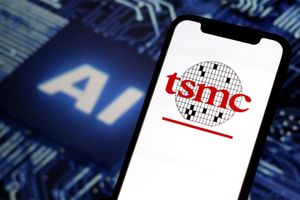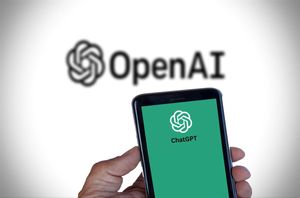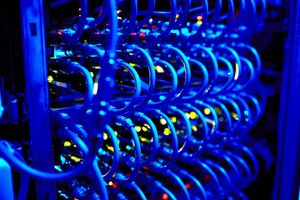As urbanization continues to surge, the building industry is under increasing pressure to adopt energy-efficient and environmentally friendly practices. Among the myriad solutions, photovoltaic (PV) technology stands out as a game-changer, offering significant benefits in reducing energy consumption and minimizing environmental impact. This article explores the integration of PV systems in building electrical systems, emphasizing their role in enhancing energy efficiency.
The Advantages of Photovoltaic Technology in Building Electrical Systems1. Safety, Environmental Protection, and Economic Efficiency
PV technology harnesses solar energy, a clean and renewable source, to generate electricity. By installing PV panels on rooftops, walls, or other ideal locations, buildings can utilize natural sunlight without emitting pollutants. Unlike traditional power generation methods that rely on fossil fuels, PV systems produce no harmful emissions, making them a safer and healthier option .
2. Energy Savings and Reduced Consumption
PV systems can operate independently within a single building, managing power generation, distribution, and consumption. This localized energy production prevents energy loss typically associated with long-distance power transmission. Advanced technologies, such as LED lighting and DC electrical devices, further enhance energy efficiency by directly utilizing the DC power generated by PV panels .
3. Reliable and Stable Power Supply
Integrating PV technology into electrical systems can stabilize power grids by storing excess energy and adjusting load distribution. This ensures a reliable and consistent power supply. PV systems are user-friendly and safe, with the ability to store and manage energy effectively .
4. Minimal Space Requirement and Zero Pollution
PV systems require minimal space and can be installed in areas with optimal sunlight exposure, such as rooftops and south-facing walls. These installations do not interfere with building aesthetics and provide a pollution-free alternative to conventional energy sources. By reducing dependency on fossil fuels, PV technology contributes significantly to environmental conservation and energy savings .
Challenges in Building Electrical System Design
Despite the numerous benefits, there are challenges in designing energy-efficient building electrical systems:
1. Inefficient Lighting Design
Poor lighting design can lead to significant energy wastage. Inadequate window materials reduce natural light penetration, necessitating artificial lighting even during the day. Using energy-inefficient lighting fixtures exacerbates this problem .
2. Inefficient Monitoring Systems
Security and surveillance systems in buildings often run continuously, consuming considerable energy. Without proper design and planning, the energy consumption of these systems can be excessive. Efficient design and strategic placement of monitoring equipment are crucial to minimize energy usage .
3. Poor Ventilation Design
Effective natural ventilation is essential for maintaining indoor air quality and reducing reliance on air conditioning systems. Poor ventilation design increases the demand for artificial cooling, leading to higher energy consumption. Optimal building layout and ventilation strategies can significantly cut down on energy use .
Practical Applications of Photovoltaic Technology in Buildings1. Photovoltaic Rooftops
Rooftops offer ample space for PV installations, making them ideal for solar energy harnessing. They receive maximum sunlight and minimally impact the urban landscape. PV rooftops also enhance the building's thermal insulation, reducing overall energy consumption for heating and cooling .
2. Photovoltaic Curtain Walls
PV curtain walls integrate solar technology with building facades, replacing traditional materials with PV panels. These installations not only generate electricity but also improve sound insulation and reduce thermal load on the building. By carefully designing PV curtain walls, buildings can maximize energy savings and environmental benefits .
3. Photovoltaic Greenhouses
In agricultural settings, PV technology can enhance greenhouse efficiency by providing necessary energy for operations and improving temperature regulation. PV panels help maintain optimal growing conditions, ensuring higher crop yields and better resource utilization. This application demonstrates PV technology's versatility beyond urban environments .
Calculating Photovoltaic System Efficiency
The overall efficiency of a PV system is determined by multiple factors:
- Array Efficiency (η1): The ratio of actual power output to the rated power under optimal solar radiation conditions.
- Inverter Efficiency (η2): The efficiency of converting DC power generated by PV panels into AC power for use in buildings.
- AC Operational Efficiency (η3): The efficiency of integrating the generated power into the building's electrical grid .
The formula for calculating overall efficiency is:
η=η1×η2×η3eta = eta1 times eta2 times eta3η=η1×η2×η3
Maintenance of Photovoltaic Systems
Regular maintenance is crucial for ensuring the longevity and efficiency of PV systems. Key maintenance activities include:
- Cleaning: Removing dust and debris from PV panels to maintain optimal sunlight absorption.
- Inspection: Regularly checking for damage or wear in panels, inverters, and wiring.
- Performance Monitoring: Using sensors and monitoring systems to track energy production and identify issues promptly .
Conclusion
Photovoltaic technology offers a sustainable and efficient solution for reducing energy consumption in buildings. By integrating PV systems into building electrical designs, we can achieve significant energy savings, enhance power reliability, and contribute to environmental conservation. As technology advances, the potential applications of PV systems will continue to expand, paving the way for greener and more efficient urban landscapes.
Media Contact
Company Name: Shenzhen MooCoo Technology Co., Ltd.
Email: Send Email
Phone: +852 9530 1404
Address:5a27-28F, Longguangjiuzuan, Minzhi Street
City: Shenzhen
State: Guangdong
Country: China
Website: https://www.ok-eps.com/






